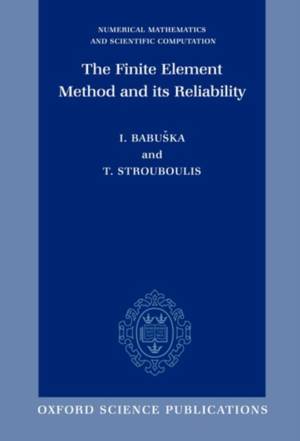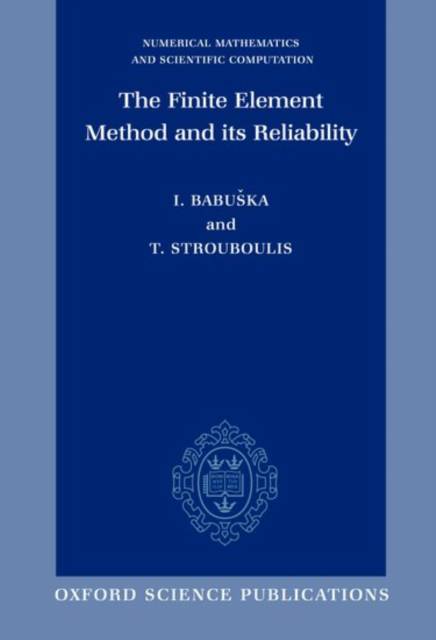
Door een staking bij bpost kan je online bestelling op dit moment iets langer onderweg zijn dan voorzien. Dringend iets nodig? Onze winkels ontvangen jou met open armen!
- Afhalen na 1 uur in een winkel met voorraad
- Gratis thuislevering in België vanaf € 30
- Ruim aanbod met 7 miljoen producten
Door een staking bij bpost kan je online bestelling op dit moment iets langer onderweg zijn dan voorzien. Dringend iets nodig? Onze winkels ontvangen jou met open armen!
- Afhalen na 1 uur in een winkel met voorraad
- Gratis thuislevering in België vanaf € 30
- Ruim aanbod met 7 miljoen producten
Zoeken
€ 356,95
+ 713 punten
Omschrijving
The finite element method is a numerical method widely used in engineering. Experience shows that unreliable computation can lead to very serious consequences. Hence reliability questions stand are at the forefront of engineering and theoretical interests. This book presents the mathematical theory of the finite element method and is the first to focus on the questions of how reliable computed results really are. It addresses among other topics the local behaviour, errors caused by pollution, superconvergence, and optimal meshes. Many computational examples illustrate the importance of the theoretical conclusions for practical computations. Graduate students, lecturers, and researchers in mathematics, engineering, and scientific computation will benefit from the clear structure of the book, and will find this a very useful reference.
Specificaties
Betrokkenen
- Auteur(s):
- Uitgeverij:
Inhoud
- Aantal bladzijden:
- 816
- Taal:
- Engels
- Reeks:
Eigenschappen
- Productcode (EAN):
- 9780198502760
- Verschijningsdatum:
- 8/11/2001
- Uitvoering:
- Hardcover
- Formaat:
- Genaaid
- Afmetingen:
- 236 mm x 160 mm
- Gewicht:
- 1386 g

Alleen bij Standaard Boekhandel
+ 713 punten op je klantenkaart van Standaard Boekhandel
Beoordelingen
We publiceren alleen reviews die voldoen aan de voorwaarden voor reviews. Bekijk onze voorwaarden voor reviews.











